IT Strategy in Schools Event
Mark Whitfield, Director of Schools and



13th October 2022
LA
About Stone Group


based

www.stonegroup.co.uk
• Originally founded in 1991 as an Original Equipment Manufacturer building our own Stone branded Laptops, PCs and Servers for the Education sector • Stone are the only UK based IT manufacturer with its own 100,000sq.ft recycling facility, ADISA and Government accredited
out of our main office located just off M6 Junction 13 Stafford • 500+ Employees



Fast Facts • £140m OEM Manufacturer & Value-Added Reseller based in Stafford • One of the UK’s fastest-growing VARs • OEM system builder – Stone-branded product – 120,000 devices per year • 500-staff single site operation • Customer Service ethos • Market-Leading Value Added Proposition • Multi-award winning Reseller, and ITAD provider • Staffordshire Business Of The Year & CRN Best Company To Work For 2021 (£101m-plus) • Strong, robust partnerships with key vendors (Microsoft, Senso, Acer, Asus, Dynabook, Cisco Meraki) • Forecast £150m Turnover for 2022 • In-house Support Desks – break-fix, expertise, consultancy • Positioned on most main Edu & Public Sector Frameworks
Pre-delivery Services overview



• Experience of 30 years OEM Manufacturing & attached services • We have mirrored that OEM capability onto our Branded Hardware options (eg HP, Lenovo, Dynabook) • Most value added-services are either FOC or low-cost • All done in-house by our Operations Team • Lean manufacturing processes keep efficiency high, and costs down • Configuration Centre enables us to get ‘inside the box’ and modify/upgrade • Branded Centre takes care of bespoke Customer Requirements (imaging, SCCM, Autopilot, Etching etc) • Bespoke e-Commerce portals available (self-service, catalogue, agreed products etc)
Example



services • Imaging – pre-shipment imaging of End User Hardware HDD Imaging services, SCCM Imaging, InTune/Autopilot pre-provisioning • BIOS Configuration, Asset Tagging, Security Etching, Laser Etching Password set, boot order priority, Asset labelling (customer or Stone supplied tags) • Bonded Storage and Call Off FOC Secure, insured, warehousing of customer kit – using our space, not yours – quick call-off process • Gold Stock provision Combat lead-time delays by holding stock on the shelf at Stone (no PO required) • Managed Logistics Own vehicles, bookable slots, multi-site drops, trackable delivery to end-users direct is available • Sustainable supply options Re-packaging into multipack cartons (less waste, smaller footprint), collection upon delivery etc
The Stone





















www.stonegroup.co.uk
Pillars NETWORKINGINFRASTRUCTURE Server and Storage Solutions Enterprise LAN and Wi Fi COMMUNICATION Connectivity and Telephony SECURITY Enterprise and Physical Security SOFTWARE Collaboration and Productivity AUDIO VISUAL Teaching and meeting spaces Professional and Managed Services
What’s



next?
coming
• Continued delays/shortages within the industry Stone are committing a rolling £10m to stockholding to help customers manage through 2022 • Release of Windows 11 and the effect on device estates With W11 & the lack of support for pre-8th Gen devices, customers have a challenge • Sustainability, green agenda and tackling waste More organisations looking at their own impact upon the environment & supply chains • InTune/Autopilot adoption will increase As customers seek more efficiency, we’re expecting more to take the next step towards automation • New Stone e-Commerce engine (live Q2 2022) Enabling easier transactions, bespoke buying portals, one-stop shop



Today’s agenda - AM 9.00 - 9.30 Registration & Refreshments 9.30 - 9.40 Welcome/Agenda, Stone 9.40 - 9.55 3 Pillars for Digital Transformation, Microsoft 9.55 - 10.25 Our ICT Strategy: What does good look like?, Esito 10.25 - 10.50 Safeguarding, Senso 10.50 - 11.20 Planning and preparing for a server-less journey, Stone 11.20- 11.35 Refreshments 11.35 – 12.15 STREAM A: Implementing a Digital Transformation Strategy STREAM B: Exploring the possibilities for teaching and learning with Microsoft tools for education, Tablet Academy
Today’s



agenda - PM 12.15 - 12.30 The Journey of a Showcase School and the role of a Microsoft Innovative Educator Expert 12.30 – 2.00 Lunch and Vendor Showcase 2.00 – 2.20 MAT Strategy for AV, Promethean 2.20- 2.40 Circular Approach to IT Procurement/Stone 360, Stone 2.40 – 3.30 Sustainability & ITAD Tour, Stone
Empower every learner and educator on the planet to achieve more



 Toh
Toh
Keith
Windows for Education Category Lead
Top Trends Impacting K-12 Education
K-12 education’s challenges are evolving, but continue to be significant, nonetheless. The focus for K-12 leaders is turning to leveraging all the digital investments made to date, identifying which remain to be made, and to creating an agile, composable digital learning organization. Source: Gartner, Published 8 February 2022 Top Trends Impacting K 12 Education in 2022 (gartner.com)

Download Report (PDF)
K-12 Education Transformation Framework

K 12 Education
Holistic approach
The education of the whole child requires a complex integration of numerous functions of a school system. Successful transformations are holistic and systemic.
Global best practice
Examples of what works and what doesn’t from education institutions around the world to identify those strategies that are the most impactful.
Grounded in research
Research from policy makers and academics where learning transformation initiatives have made dramatic improvements.
Empowering Transformation










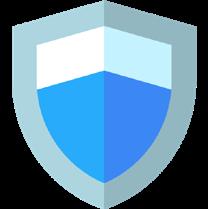























Regardless of…
Every learner deserves access to the best learning opportunities and support systems
Ability Income Language Location/Mobility Identity
Enabling Equitable Education

Source https://aka.ms/EquityGraphic
Do more with less with Microsoft.



One unified platform for teaching, learning, and work

© 2021 Microsoft Corporation. All rights reserved. Microsoft, Windows, and other product names are or may be registered trademarks and/or trademarks in the U.S. and/or other countries. The information herein is for informational purposes only and represents the current view of Microsoft Corporation as of the date of this presentation. Because Microsoft must respond to changing market conditions, it should not be interpreted to be a commitment on the part of Microsoft, and Microsoft cannot guarantee the accuracy of any information provided after the date of this presentation. MICROSOFT MAKES NO WARRANTIES, EXPRESS, IMPLIED OR STATUTORY, AS TO THE INFORMATION IN THIS PRESENTATION.

Our ICT Strategy What
does
good
look like?
Rob Curran, Director – Esito Ltd
it should
What it shouldn’t be:

Our ICT Strategy What does good look like? What
be: A statement of your objectives To get from where you are now to where you want to be Based on outcomes (why are we doing this) Realistic and achievable Accessible to an executive audience A baseline to underpin ICT investments and expenditure Specific to your Trust/school
A technical design or architecture/blueprint A reflection of already known plans / projects Based on outputs or inputs (what and how do we do it) Unrealistic and unachievable A series of technical jargon and acronyms A business case seeking funding for projects Cut & paste from the internet
Our ICT Strategy

Purpose (example)
We have reached a point in the development of our Trust where we need to standardise ICT provision across our schools, whilst allowing & accepting local differences.
As part of this we are seeking to modernise, simplify, & rationalise the ICT we currently have as part of a proactive, well managed strategic approach. Ultimately our aim is to improve & stabilise the provision of ICT for our teachers, pupils, & administrative staff.
What
it should contain:
The purpose: why do you need this Strategy?
What
does good look like?

What it should contain: The purpose: why do you need this Strategy? Your outcomes: what are you seeking to achieve? Outcomes (example) Improvements in: • cross-working • collaboration & communication • productivity • consistency • standards Greater visibility and understanding of: • financial & operational liabilities • risks & mitigations • roles, responsibilities, & expertise Prioritisation of: • resources & assets • investments • staff time & effort • central (Trust) and local (school) requirements Our ICT Strategy What does good look like?
does good look like?
Containing the major hardware and service elements which make up the “hard” landscape of ICT, from the underlying physical networks on each site through to key services such as backup and anti-virus.

what does
Covering the applications, software and end user systems which underpin our management of data and information, to support our decision making processes.


Providing the links between ICT operations and infrastructure, and how these support the delivery of teaching and learning within each school.

What it should contain: The purpose: why do you need this Strategy? Your outcomes: what are you seeking to achieve? The scope:
it encompass?
Our ICT Strategy What
seeking
Servers (example)
aim is for a serverless infrastructure,
our dependency on local servers;
scope
what does
objectives
scope, where do we want
cross site & remote working; moving to equivalent central, cloud based tools

Applications (example)
services
will adopt a “cloud first” strategy, seeking to renew or replace software & application solutions with cloud enabled versions where possible, & reduce the on site footprint. Software as a Service (SaaS) will be our preferred approach.”
Digital Resources (example)
Schools will retain local choice for the selection & use of on line resources for teaching & learning, although these should fit within our Applications framework wherever possible (for example; single sign on through Office 365).”
What it should contain: The purpose: why do you need this Strategy? Your outcomes: what are you
to achieve? The
:
it encompass? The
: for each of the elements in
to be?
“Our
removing
enabling
&
available through our Microsoft 365 platform.”
“We
“
Our ICT Strategy What does good look like?

It doesn’t stand alone: What other strategies & development plans is the ICT Strategy dependent upon? What other strategies & development plans rely upon the ICT Strategy? There should be clear linkage to these to avoid “technology islands” Trust/School Development Plan Refresh strategy Device policy Sustainability Finance strategy Security policies Print strategy Our ICT Strategy What does good look like? … and more …
trying to achieve);
of success); scope (what
each specific
other related

So, what does good look like? A genuinely strategic document which sets out where you want to be and why Clarity of purpose (what is it
outcomes (the measure
does it cover); and objectives (for
aspect) Clear linkage to
strategies, policies, and development plans Ultimately something that underpins investment decisions and supports the case for change Try testing yours against these criteria … Our ICT Strategy What does good look like?
Thank you


Our Mission

‘To deliver an affordable dynamic platform, to support our customers, to manage their users and devices
AT
SCALE’
Your Platform


‘We need wide adoption across all our teachers’


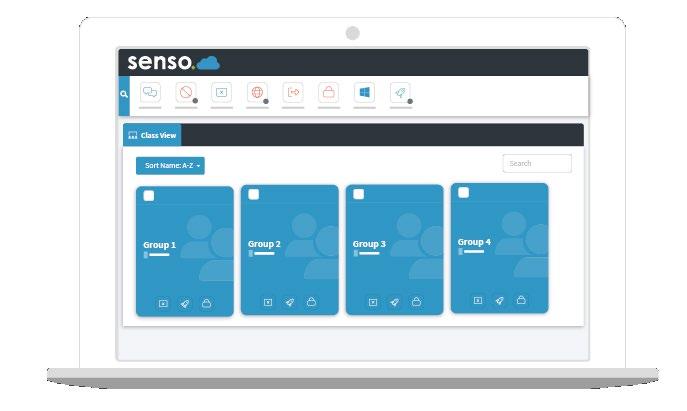
Class Instructor • Simplified UI • Live Thumbnail View • Lock Screen • Launch Website • Close Active Tab
‘False positives can take us a lot of time’

Safeguarding


• SWGFL partnership for Assisted Monitoring • Journey into Machine Learning • Expansion of context window • Monitoring of number/severity of violations per student per time period • Introduction of confidence scores based on e.g. word boundaries, case matching • Thorough auditing of all Senso libraries, using corpus evidence to inform keyword decisions

‘We need a simple way for our staff to access training materials’


Senso Learn • Staying compliant • Track progress • Monitor activity • Onboard new staff • Upskill current staff • Add your own content • Choose from a library of courses
‘Can Senso safeguard our students and staff during an incident’

Senso



Alert • Staff Safety and Wellbeing • Safeguarding and medical emergencies • Cybersecurity and business continuity • Ensure policies and procedures are followed • Real time incident progress tracking • Secure staff communications
Our Promise

‘We will not stop innovating to deliver our mission’
Planning and Preparing for a
Server-Less Journey with Stone

Scott
• Scott Logan 13th October 2022
Logan Solutions Consultant
How Will You use the Cloud

Planning and Preparing for a Server-Less Journey
Hosted Email Document Storage Virtual Servers Disaster Recovery Software Applications How Will You Secure The Cloud


Planning and Preparing for a Server https://www.gov.uk/government/publications/moving-your-school-to-the-cloud/moving-your-school-to-the-cloud
Planning and Preparing for a Server-Less Journey







Planning and Preparing for a Server-Less Journey M1.1 – Current Challenges and Solutions M1.2a – Infrastructure Cost-Saving Model M1.2b – Full Cost Saving Model M1.2c – Cost Charts Model M1.4a – Milestone Gant Chart M1.4b – Full Gant Chart M1.5 – Test Project Site M1.6 – Staff Technical Audit M1.7 – Site Phone and Broadband Audit M1.8 – Hardware Audit M1.0 – Responsibilities M1.3 – Milestones M2.1 – Policies and Procedures M2.2 – Risk and Impact M2.3 – Data Cleanse M2.4 – Failover Tests M3.1 – Home Drive Migration M3.2 – Shared Drive Migration M2.0 – SSO Setup M3.0 – Checklists
Planning and Preparing for a Server-Less Journey





To
help you on your journey part of our toolset is to give you a cost analysis for
Energy usage Licencing costs Hardware costs So
you can predict where your costs are going
Planning and Preparing for a Server-Less Journey

Cloud Benefits Cost Effective Increased Collaboration Lower Management Improved Resilience Improved Access Data is Safer Better for the Environment Time Scale
What is Stone Equinox
pre-configured


Platform based

A
Hyper-Converged
on Windows Server 2022 S2D Available with fast NVMe Accelerated Hybrid Storage or All Flash configurations The newest server platform from Intel (icelake) Designed for the evolving needs of the Education Market Fully redundant Available in 2 or 3 nodes
What’s in the box?



Each Equinox cluster is comprised of next generation Stone Servers. As Standard this includes: Top tier, fully managed, Intel Enterprise Server platform Two CPU sockets per system 2x Intel Xeon icelake processors, ranging from 8 to 32 cores per socket 128GB to 1.5TB of RAM per node Flexible customer networking options Cluster Storage that can store between 8TB and 128TB (Hybrid), 6.4TB to 102TB (All Flash) Two Node: A 100GBit/s aggregated internode link (Hybrid), 400GBit/s aggregated (All Flash) Three Node: 300Gbit/second aggregated internode links (Hybrid), 1200GBit/s aggregated interlink (All Flash)
Thank You






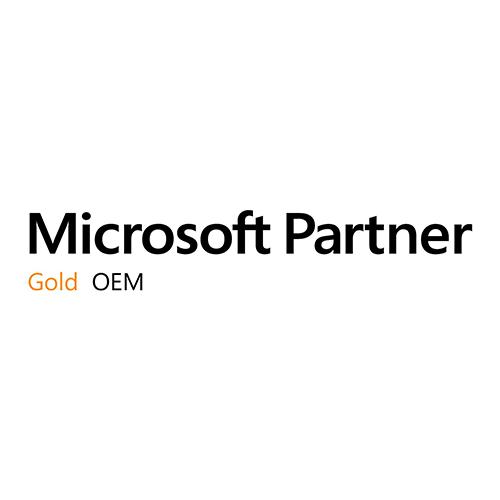



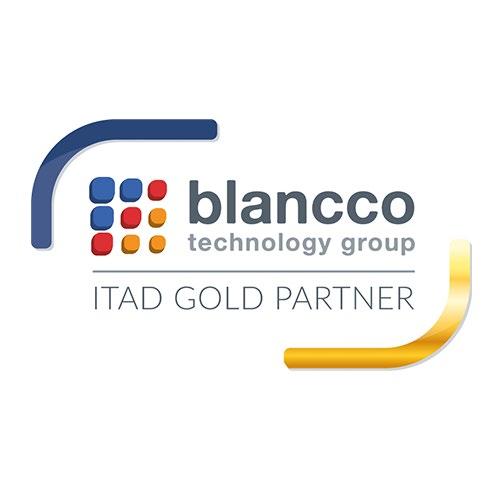


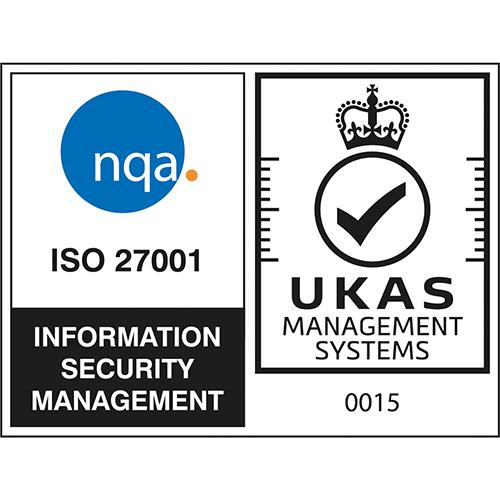



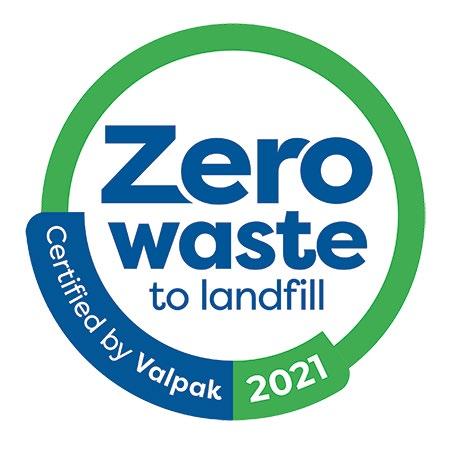

Refreshments

Implementing a Digital Transformation Strategy
13 October 2022
Philemon
Burney
Philemon Burney
Strategic lead for Schools,
and

Head of Consultancy & Training Phil.Burney@tablet.academy @PhilemonBurney /PhilemonBurney
MATs
MoEs Presenter for Microsoft UK in education Former teacher, network manager in education and corporate trainer
Common Challenges?
Rising costs e.g. energy, fuel, staffing, building maintenance
Equitable, standard access for all incl. managing tension between uniformity versus independence
Sustaining outcomes across all schools
especially those who have recently joined
Effective communication and coordination between central office, schools
What are your current challenges/priorities?
Operational

Financial






Since lockdown, what are…?
Successes Opportunities
“How to Find Bright Spots”

Dan Heath: How to Find Bright Spots - YouTube
Digital strategy


How can technology support/enrich/enhance/shape our school/MAT goals?
What is possible? What does “good” look like?
Transformation Process for School Leaders
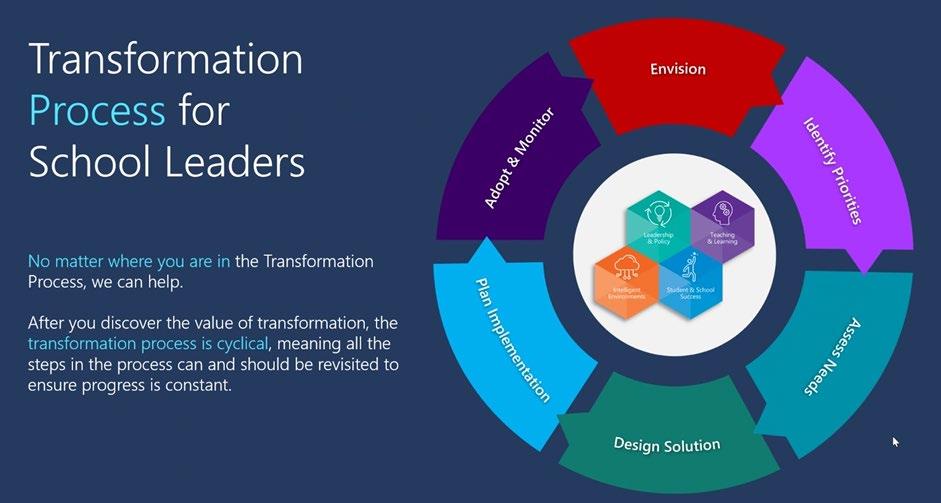
Education Transformation Framework

Within each area of the






ETF, technology is a key enabler to unlock opportunity.

About the ETF

Holistic approach
The education of the whole child requires a complex integration of numerous functions of a school system. Successful transformations are holistic and systemic.
Global best practice
Examples of what works and what doesn’t from education institutions around the world to identify those strategies that are the most impactful.


Research from policy makers and academics where learning transformation initiatives have made dramatic improvements.

Grounded in research
Vision for Change

Build a shared, inclusive vision representing the aspirations of students, teachers, leaders, and the community with the flexibility for ongoing revisions to address continual change.
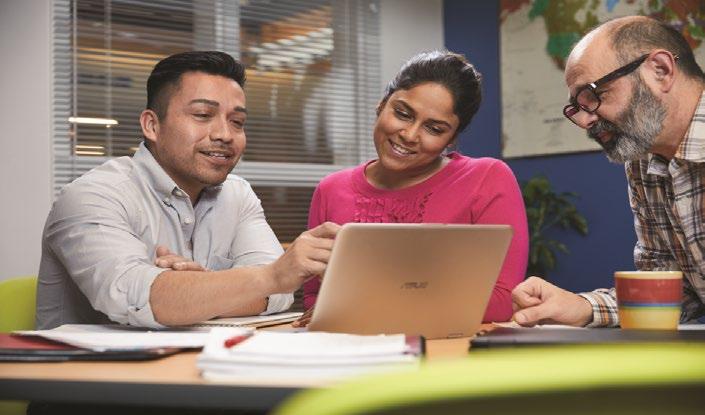
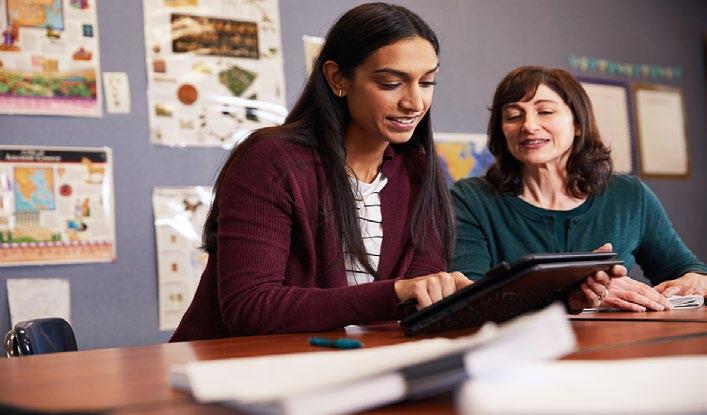
Leadership & Policy
Sample Projects: ETF Workshops to identify key pain points, deployment of stronger supportive tools to drive collaboration (Office 365, Teams, Intune), technology agreements and roadmap.



Strategic Planning & Change Management
Develop strategic implementation plans and identify strategies and processes to support stakeholder groups through the transition.
Continuous Improvement & Culture
Continuously monitor progress and measure results while fostering a culture of organic growth, improvement, collaboration, and innovation.
Community Engagement & Partnerships
Enable effective transformation through community engagement and a coalition of partners with complementary competencies and knowledge.
Collaboratively envisioning and creating an intentional culture of innovation and learning, with shared goals that engage the community and motivate leaders, educators, and all stakeholders to plan and lead change.
Student-Centered Learning
Create a pedagogy inclusive of teaching and learning practices that are project and competency-based, collaborative, and require students to own their learning.
Teaching & Learning
Helping all students achieve their potential by taking a student-centered approach to explore all aspects of teaching and learning: curriculum, assessment, devices, and spaces with a focus on understanding and meeting the needs of all students.
Sample Projects: LMS integration & implementations, Predictive analytics and skills platforms (Azure, Power BI)
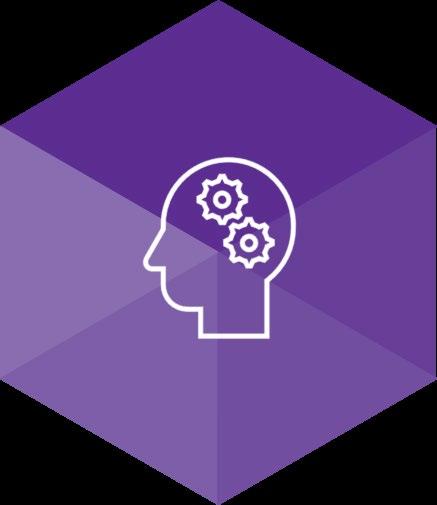
Curriculum & Assessment
New forms of curriculum whether project based, personalized or competency driven – require new tools to access, customize and assess progress for each student.
Devices for Learning

Offer students multi modal learning through voice, touch, and digital ink and increase their ability to retain information, generate new ideas, and use real world software.



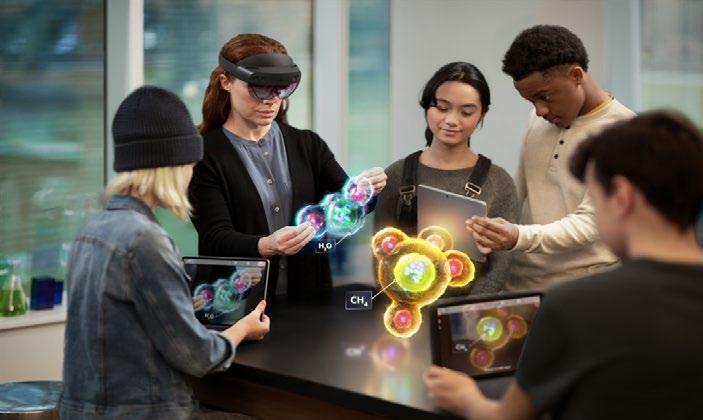
Learning Spaces
Align spatial design with learning goals, so lesson plans drive the classroom setup, instead of the other way around and physical learning spaces are more flexible, collaborative, equitable, healthy, and inspiring.
Hybrid Learning
Enable learning in physical, digital and hybrid realms, seamlessly spanning formal and informal learning contexts across time, location, and learning media.
Intelligent Environments

Developing safe and secure onsite and online environments and leveraging data analytics to optimize student outcomes and to create efficient, responsive, and sustainable processes and allocation of resources.
Safety, Security, & Privacy
Ensure the safety of students, faculty, and staff using the latest security monitoring, communications, notification, and emergency response systems and technologies.

Optimized & Sustainable Operations
Optimize and increase the efficiency of the daily operation of schools, including administration, logistics, and IT to increase productivity and reduce cost.
Advanced Analytics & AI
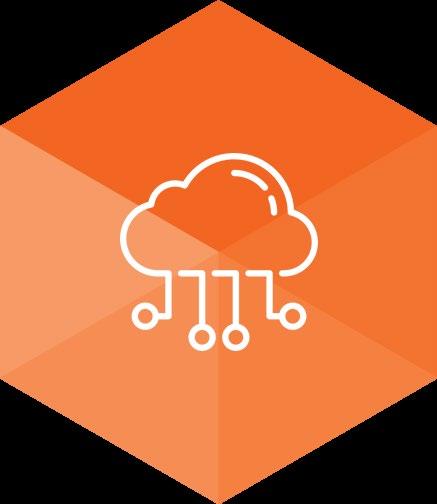
Use Integrated data with advanced analytics for system improvements and visibility into teaching, learning, and administration progress within and across classrooms and schools.


 Sample Projects: LMS integration & implementations, Connective tools (Azure IoT), analytics (Dynamics 365, Power BI, Stream Analytics)
Sample Projects: LMS integration & implementations, Connective tools (Azure IoT), analytics (Dynamics 365, Power BI, Stream Analytics)
Educator, Leader, & IT Development
Build collaborative capacity for educators, staff, IT, and leaders as part of a learning community working to continuously improve teaching and learning.
Student & School Success
Anchored in equity and inclusion, building capacity through professional learning and development for all to ensure students develop their social and emotional skills and are successfully prepared for the future.
Sample Projects: New learning management systems, collaboration tools (Teams), analytic tools (Power BI, Viva), device implementations, connection platforms (Azure Active Directory, Intune)


Future-Ready Skills
Empower students with the digital and productivity skills they need to be successful and active participants in the community for employment and entrepreneurship.
Social Emotional Learning
Develop students’ ability to manage emotions, set and achieve goals, feel, and show empathy for others, establish, and maintain positive relationships, and make responsible decisions.
Equity, Inclusion, & Accessibility
Provide accessible technology that can meet the needs of all students looking to take greater responsibility for their learning and development of technology skills.





What is a strategy?
Strategy: But what is it?
essence of a strategy is a design for actions required to meet an important challenge or opportunity. Whether in chess, war, business, or politics, the basic idea is to focus energy and resources where they will do the most good — on the enemy or opponent’s weakness, or where the opportunity for gain is the greatest.
strategy is not a list of aspirations or ambitions, nor is it a list of all the things the committee members think are good ideas.

“The
A
Effective strategies
are designs
of coordinated actions aimed at overcoming specific
challenges.”
https://hbr.org/2022/06/build a strategy that addresses your gnarliest challenges
Examples

MAT Digital Strategy Toolkit






https://bit.ly/MATDigitalStrategyToolkit Develop with key stakeholders Optional facilitated workshop
Strategy Planning

Tool Select the most important milestones. Allocate time for when you want to complete them. https://bit.ly/StrategyPlanningTool
Strategy Planning Tool

each
you’d like to begin
For each milestone reveal a list of tasks and add your own. For
task assign a lead and plan when
and complete it.
Change

Management https://www.prosci.com/blog/use adkar to reinforce handwashing behaviors
Thank
you
Exploring the possibilities for Teaching and Learning with Microsoft Tools
and
the
and beyond
Using Teams
OneNote in
classroom
Hello
Clara Heppleston
Consultant, TA Education
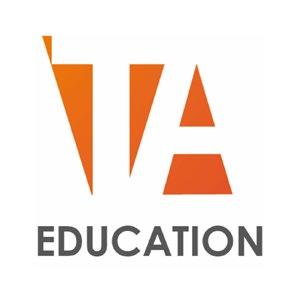
Clara is a former Maths teacher and department head with 18 years experience in the classroom. She now delivers training on tools including Microsoft Teams and OneNote, as well as supporting on key projects, particularly related to strategy.




Sir Kevin Collins
Chief Executive , Education Endowment Foundation
“ The question is no longer whether technology should have a place in the classroom, but how technology can most effectively be integrated in ways which achieve improved outcomes for young people.“

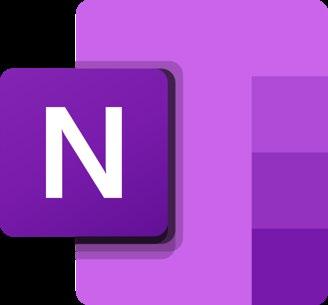


Exploring the possibilities for Teaching and Learning with Microsoft Tools Class Team features Homepage Class Notebook Assignments including Reading Progress Grades Reflect Insights Parents Immersive Reader Microsoft Whiteboard



Homepage Class Notebook Assignments including Reading Progress Grades Reflect Insights Parents Class Team features
Homepage


for team owners
for team members

• Customisable
• Read only
• Admin can switch off if desired SOL
OneNote Class Notebook


Structured OneNote Notebook with premade sections for the teacher and the pupils

OneNote Class Notebook




Collaboration Space
Pupils and teachers can all edit these pages. Great for group work and collecting whole class feedback.
OneNote Class Notebook


Content Library Teacher can edit, pupils can view. Great for reference material and revision resources.


OneNote Class Notebook




Teacher Only Teachers can edit. Cannot be seen by pupils.
Great
for preparing and storing teaching
materials
and for staff collaboration when sharing classes.
OneNote Class Notebook



Pupil Notebooks
Notebooks

Individual
for each pupil. Teacher can see and edit all, pupil only has access to their own. Customisable sections. Teacher can distribute pages and sections to all pupil notebooks in a couple of clicks.
Assignments

Direct pupils to tasks and resources.
Provides a space and a time frame for pupils to complete their work.
Opportunities for teacher feedback in a variety of digital forms.


Assignments




Title Instructions including images, weblinks and gifs Resources for reference and editing Resources from Apps eg Flip, Whiteboard, Wakelet Rubrics to emphasise marking criteria Customise when and where to post the notification Set due dates and which pupils will receive the task.
Assignments
Teacher can edit task directly



Teacher feedback in a wide variety of forms
Reading Progress







A specific type of assignment designed to monitor, track and improve pupils’ reading.
Grades

Review all assignments

grade

set to a class. Includes average
per student and per assignment
Reflect
Set a question to track and monitor social and emotional responses





View pupil responses in a range of formats including together view
Insights


Delve
deeper into the digital engagement of pupils. Overview page
Insights
Assignments analysis

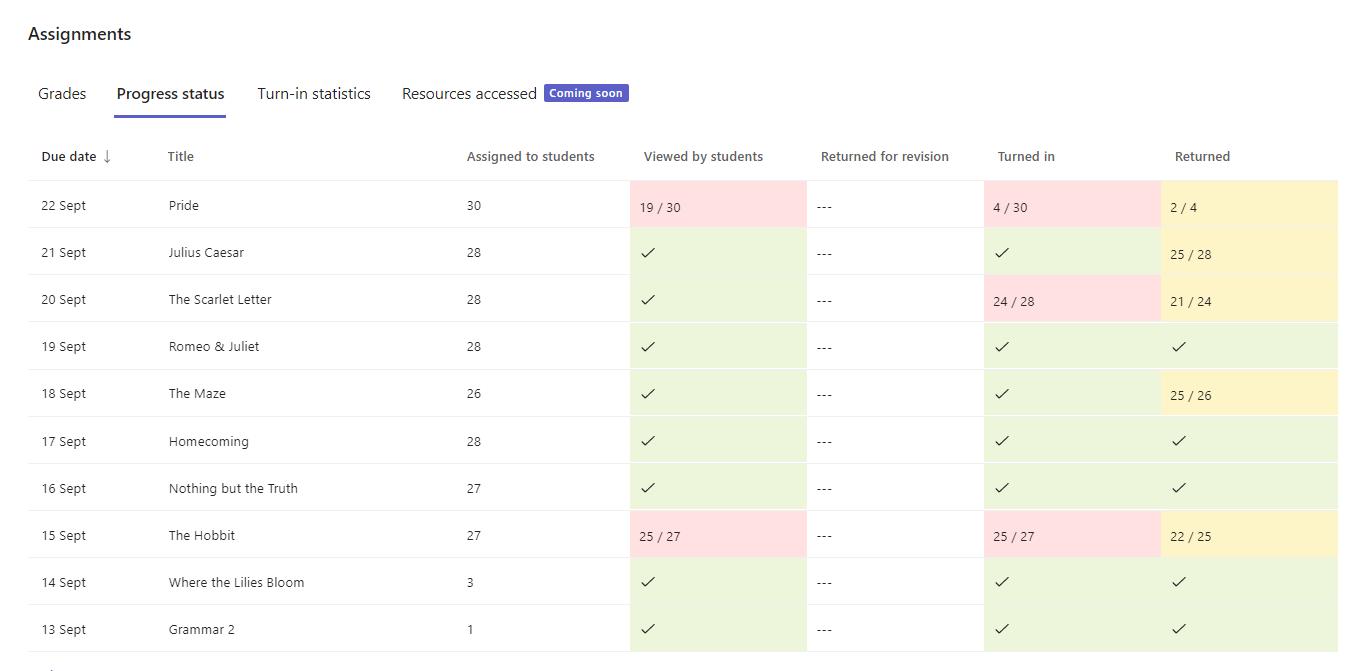


Delve deeper into the digital engagement of pupils.
Insights
Reading Progress Data





reading progress
Delve deeper into the digital engagement of pupils.
Create
challenge assignment
Immersive Reader
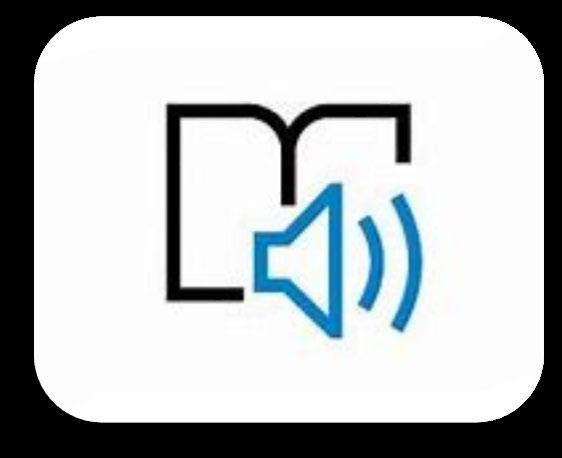

Immersive Reader



Available in all O365 browser and desktop apps and some webpages via Edge
Immersive Reader

Customise the text layout, language (web only), colour and font.




Microsoft Whiteboard


Whiteboard at the front of the Class
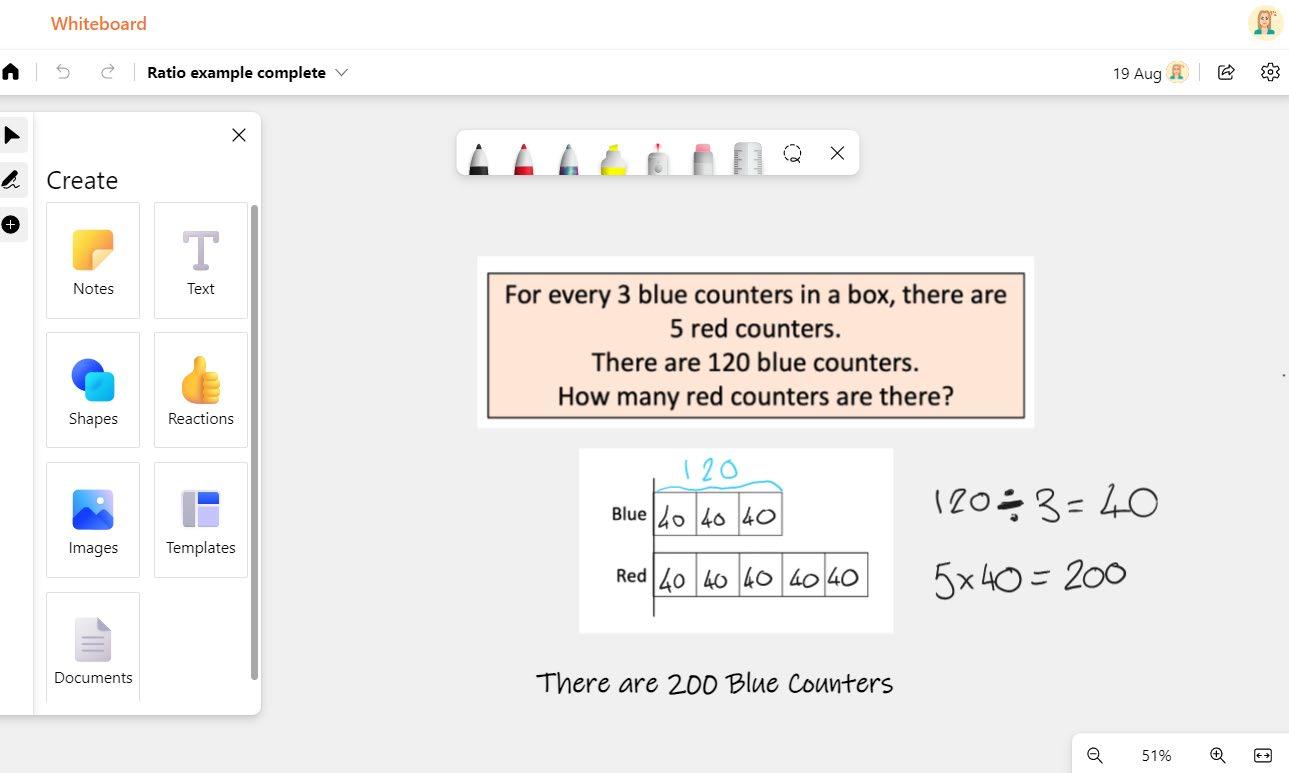
in advance
while

Prepare
Edit live
teaching Add to class team for reference or further editing
Whiteboard for collaboration


work
Add to a group assignment for pupils to
together Add notes to enable aggregated reactions
Thank
you
The Journey of a Showcase School and the role of an Microsoft Innovative Educator
Georgina Xuereb
Expert
Senior Teacher for EdTech and Research at Shireland Collegiate Academy georgina.xuereb@collegiateacademy.org.uk
My Journey with EdTech





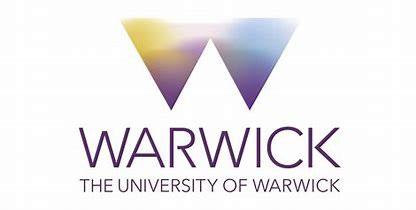


2012 2014 Now 2016 2020
Developments over time
• A move to 1:1 devices as it became clear that our strategy was delivering improved outcomes
• With increased use we needed increased CPD for staff on how to effectively embed technology into our teaching to support student learning.
• It’s not technology for technology sake.
• Support staff by doing the heavy lifting and surfacing resources as well as data that will support staff.
• Move away from the “Hero Teacher”
What was the tipping point?
• When staff realised that if they didn’t engage in the use of tech they would either miss out or be less effective than their peers.
• A recognition that tech was supportive and could reduce workload. Fewer meetings, feedback and marking reductions, easier monitoring better outside of the classroom learning.
• An infrastructure that could support the desire to exploit technology.


‘I can, I know how, I want to.’
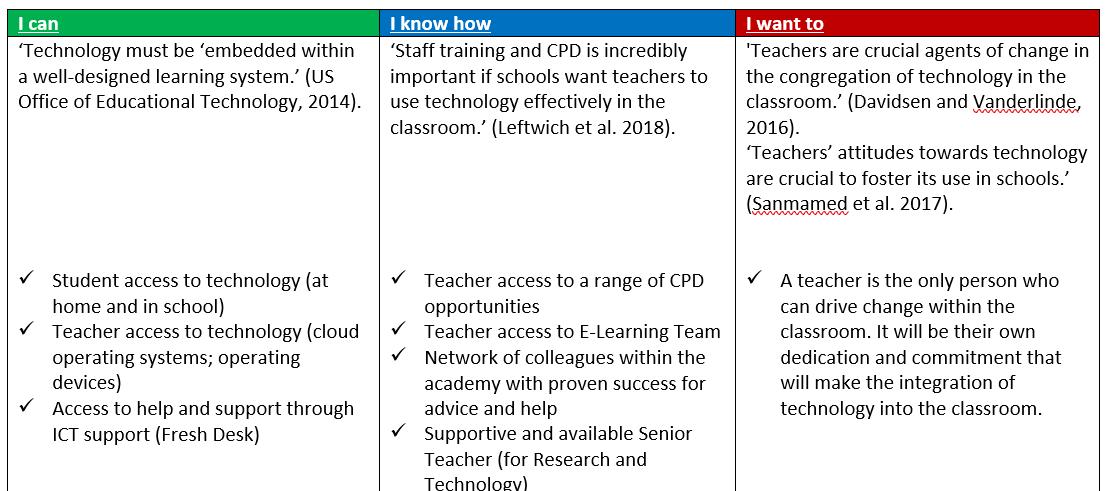
The role of an MIE Expert at SCA
Model the attitude towards technology Be an example of good practice
Support and training – the day to day
help Push key agendas from digital lead
Share developments from Microsoft – you are part of a wider community
Thank
you Let’s continue the conversation georgina.xuereb@collegiateacademy .org.uk
Lunch and Vendor Showcase

Getting Value From Your Partnerships

 Ben Brown
Ben Brown
Oct 2022





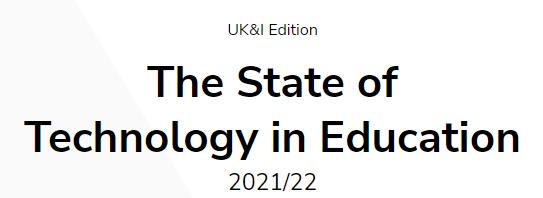



The State of Technology in Education Report 2021/22 (prometheanworld.com)
Pre and post sale support
Training and ongoing CPD

Value
Other value partnerships
Dedicated contact
Promethean Accelerator Programme


112 ©2021 Promethean Limited. All Rights Reserved.



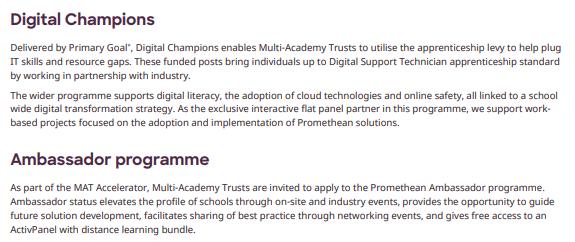
How does it work?



114 ©2021 Promethean Limited. All Rights Reserved.

Sustainability and E - Waste: Our Journey Craig Campion
IT Asset Disposal – A Global Challenge

• Unwanted or surplus PCs, printers, networking, communications and telecoms equipment plus other electronic devices is collectively known as e - waste.


• In 2019, the Global E - Waste Monitor reported that out of 53.6m metric tonnes of e - waste produced worldwide, 82% of it was sent to landfill, incinerated or illegally traded.
• The world collectively is increasing the total e-waste figure by approximately 4% every single year.
www.stonegroup.co.uk




www.stonegroup.co.uk IT Asset Disposal – UK e - Waste Facts & Value 1.5 tonnes of WATER 21kg of CHEMICALS 240kg of FOSSIL FUELS The production of a single computer and monitor uses at least…







www.stonegroup.co.uk IT Asset Disposal – A National Challenge 23.9kg of e - waste Per Person £370m lost each year in valuable raw materials 500,000 tonnes unaccounted e - waste 31m laptops currently hoarded Global Waste Monitor Report Lancaster University Anthesis Report & Lancaster University Lancaster University
PROTECT






Protect The Planet and…
OUR CHILDREN AND OUR ENVIRONMENT


Choosing the Right E - Waste Partner





















Free Collections Fully Accredited Secure Data Destruction Complete Traceability Cash Rebates Peace of Mind Own Onsite Facility
Stone
Demo

360
Craig Campion
Stone


360


Stone 360 Statistics Since Launch 10,000 downloads (both iOS/Android) 4,100 registered users (200 per month) 4 million head count from registered customers 940,000 units collected 5,000 trees planted (est. 60 tonnes of CO2 reduced). 88% ITAD conversion for registered customers






Constant Innovation 1. New Partnership - Ecologi 2. Major UI/UX enhancements (Woodland seasons, dark mode) 3. Edit a collection feature 4. In-App Messaging 5. Site location enhancements (Geo-location) 6. Driver location tracking 7. Welcome screen & on-boarding 8. In-App documentation & signatures
Thank You


Making a Digital Difference
 Sheryl Moore
Sheryl Moore
Stone Group Sustainability Framework
Head of Sustainability
What does Sustainability mean to ensuring a responsible business?

Sustainability is a mindset that seeks to create a resilient, responsible and purpose driven business by safeguarding three vital features no business can operate successfully without:
environment

Resilient balance sheet and responsible business Resilient
communities (Employees, Supply chain and Customers)
Resilient
What does Sustainability mean to ensuring a responsible business?

Sustainability is a mindset that seeks to create a resilient, responsible and purpose driven business by safeguarding three vital features no business can operate successfully without: Resilient environment Resilient communities Resilient balance sheet and Responsible business Includes environmental factors such as: • Resource use • Waste • Carbon • Biodiversity • Pollution (land, air and water) Includes social factors such as: • Employment of local labour • Equality and Diversity • Supporting charities through giving and volunteering • Inclusivity • Spend with social enterprises • Employee engagement and wellbeing • Training and development • Tackling social deprivation • Local supply chain Includes commercial and ethical factors such as: • Margins • Cashflow • Operational costs including lean • ROI • Risk Management • Purpose • Ethics • Responsibility
Framework Structure


The “Making a digital difference” framework is split across the two focus areas of Environmental Sustainability and Social Sustainability with ten areas of activity Environmental Circular Economy (SDG 12, Responsible Consumption/Pillar infrastructure/Repair/Reuse/Warranty) Sustainable Procurement (SDG 11, Sustainable Cities/Pillar Partnerhubs) Net Carbon/GHG Zero (SDG 13, Climate Action/ Target Net Zero 2030) Environmental Protection & biodiversity (SDG 14/15 Land and Sea) Zero Waste (SDG 15, Life on Land)
Framework Structure

The “Making a digital difference” framework is split across the two focus areas of Environmental Sustainability and Social Sustainability with ten areas of activity

Social Sustainability
Sustainable Solutions (SDG 9, Innovation, Pillar Networking)
Social Value (SDG 10, Reduce Inequalities)
Wellbeing and Engagement (SDG3, Good Health)
Protecting Human Rights (SDG8, Good Jobs/economic growth/security)
Closing the Digital Gap (SDG4, Quality Education)
Environmental Sustainability Pillars
always

continue
use




Circular Economy Carbon Reduction Sustainable Procurement Environment Protection & Biodiversity Zero Avoidable Waste We will achieve net zero carbon by 2030 We will
with Zero to Landfill and be single
plastic free Our operations will ensure a healthy environment and increased biodiversity We deliver a circular IT Solution at every stage of Asset lifecycle We will
drive sustainability with our Supply Chain
Social Sustainability Pillars




Sustainable Solutions
Social Value

Wellbeing and Engagement
Closing the Digital Gap Protecting Human Rights
Working with partners to reduce digital poverty through hardware and reduce digital divide through learning and development
Embracing innovation and providing sustainable solutions to all stakeholders
Delivering Social Responsibility through our actions Measure and monitor delivering social value Supporting employees and embrace diversity Supporting communities and individuals to ensure equality of opportunity and access

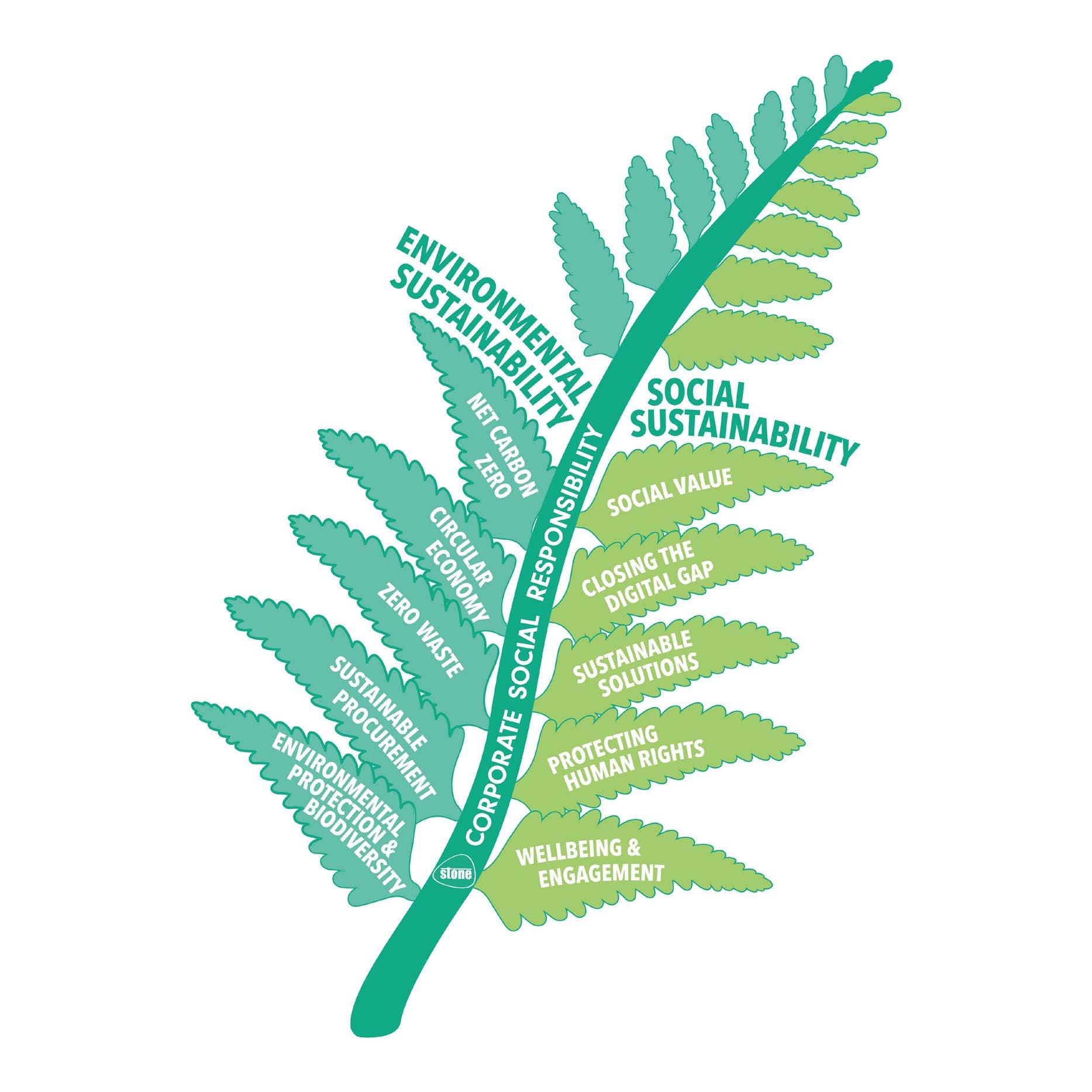
Sustainability Stages – 3 year programme Stage 1 Integrity and Inform Stage 2 Innovate and Engage Stage 3 Inspire and Lead
Progress Divided across the Three Stages
Circular Economy
Sustainable Solutions
Carbon Reduction Social Value
Zero




Avoidable Waste
Wellbeing and Engagement
Sustainable Procurement
Closing the Digital Gap
Environment Protection & Biodiversity Protecting Human Rights
Stage 1 Integrity and Inform

To understand what we need to measure and where we are up to
Stage 2 – Innovate and Engage
Deliver on targets, enhance digital and sustainable offering to support all stakeholders
Stage 3 – Inspire and Lead
Provide leading solutions to support our customer’s sustainable ambitions through sustainable solutions, reducing environmental impact and increasing social value
Framework Principles
Stone’s Making a digital difference framework sets a common direction of travel and is made up of two parts: Environmental Sustainability and Social Sustainability.
The framework is flexible and will be adapted as our business progresses through the stages and as the sustainability landscape changes and evolves.
The framework is a 3 year programme with each stage required to be completed in turn

Each business vertical will support the framework.
Framework governance will be managed through the Sustainability Leadership Forum
Framework KPIs

How
Each
Net
successfully we are progressing the actions Making a Digital Difference framework will be measured through a series of social value, cost and volume centred KPIs
business vertical is to report on progress to Group SLF on a centrally held dashboard Environmental KPIS Social KPIS
Zero Carbon – Scope 1,2,3 Social Value Generated by Client and Business Vertical (Thrive System) Zero Avoidable Waste – ITAD volume and Zero Waste to Landfill accreditation Charity donations and volunteering Cost and Volume of Water Learning and Development Environmental Incidents Employee Engagement

Stone Group Vision & Values
Our Vision
To empower our customers to improve the education, health and quality of life of people in the UK or to transform their businesses creating greater productivity and value.


Social Value Linked to PPN06/20 Representative of Stone’s commitment to being a responsible business contributing to the wellbeing, inclusion and engagement of communities Specific to your needs Social Value Return and data Reduce (Repair)– Reuse (ITAD) Stone Refurb – Recycle – Zero to Landfill Diversion from Landfill/Carbon Saved/Units recycled/Water Impact/Plastic saved/Precious Metals/Energy Saved Employment/training/work experience/community projects/ T Levels/ school Engagement Green spaces/mental health first aiders/volunteering/ apprentices
Metrics


Environmental
Social Calculator Timeline

By Customer by Business Vertical
Master text styles

143
• Edit
• Second level • Third level • Fourth level • Fifth level
What We Do: IT Asset Lifecyle


Customers can come to us at any point in the life of technology and we can offer a solution to all needs.
Our Circular IT strategy allows us to be at the forefront of technology by providing proactive, innovative and safe ways of working.

Thank you for attending
IT Strategies for Schools


Please fill out our feedback form before you leave






















































 Toh
Toh






























































































































































 Sample Projects: LMS integration & implementations, Connective tools (Azure IoT), analytics (Dynamics 365, Power BI, Stream Analytics)
Sample Projects: LMS integration & implementations, Connective tools (Azure IoT), analytics (Dynamics 365, Power BI, Stream Analytics)





















































































































 Ben Brown
Ben Brown














































































 Sheryl Moore
Sheryl Moore





































